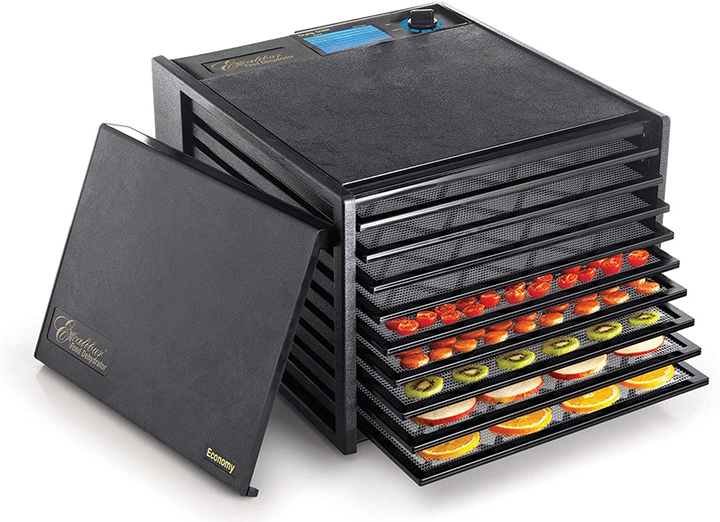Food Storage > Dehydrating
Dehydrating food is a great way to preserve food for long-term storage. The process of dehydrating involves removing moisture from the food, which inhibits the growth of bacteria, yeast, and mold that can spoil the food. In this article, we will explore the process of dehydrating foods for long-term food storage.

The first step in the dehydrating process is to prepare the food. This involves washing, peeling, and slicing the food into even pieces. Some foods, such as berries, can be left whole. It is important to make sure that the pieces are all uniform in size so that they dehydrate evenly.
The next step is to dry the food. This can be done using a dehydrator, which is a machine that blows warm air over the food to dry it out. Another option is to use an oven on its lowest setting or a sunny, dry location. It is important to make sure that the food is completely dry before storing it, as any remaining moisture can cause the food to spoil.
Once the food is dry, it can be stored for long-term storage. It is important to store dehydrated food in airtight containers to prevent moisture from getting in. One option is to use mason jars with airtight lids, or Mylar bags with oxygen absorbers. The food should be stored in a cool, dry place, away from sunlight.
Some common foods that can be dehydrated for long-term storage include fruits, vegetables, and meats. Fruits can be dehydrated and used for snacking or in baking. Vegetables can be used in soups, stews, and casseroles. Meats can be used in stews or rehydrated and used in other dishes.
Dehydrating food is a great way to preserve food for long-term storage. The process involves removing moisture from the food, which inhibits the growth of bacteria, yeast, and mold that can spoil the food. Once the food is dry, it can be stored in airtight containers in a cool, dry place, away from sunlight. Some common foods that can be dehydrated for long-term storage include fruits, vegetables, and meats. With proper preparation and storage, dehydrated food can last for years, providing you with a reliable source of food during emergencies or when fresh food is not available.